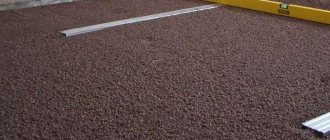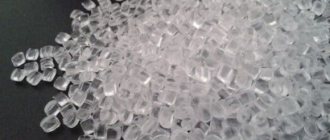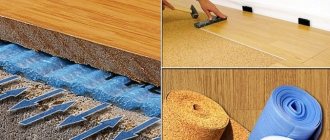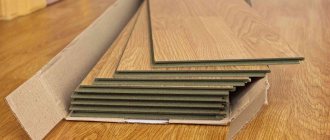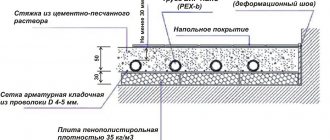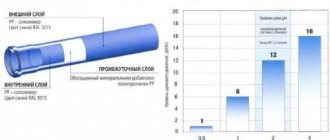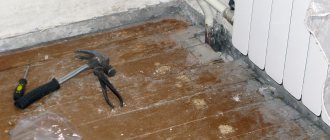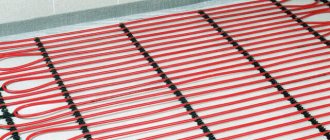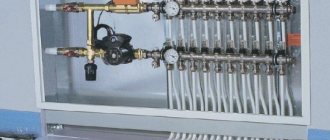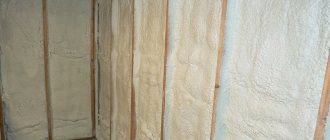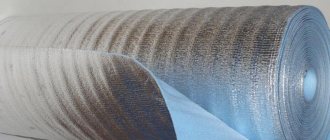Types of cork coverings
Surfaces in an apartment can be insulated and protected from sound with different types of cork coverings, which are available in the following forms:
- Wallpaper.
- Panels or tiles.
- Rolls.
- Liquid coating.
- Technical jam.
They are based on paper, which makes the coating thin, no more than 1 mm thick, convenient to use, thanks to this there is no need to make a backing for cork wallpaper. Wallpaper is used to cover the walls. They are glued using regular glue. Cork wallpaper must be glued end-to-end; the service life is about 10 years. Available in the form of a continuous sheet, rolls, or self-adhesive material.
Panels or tiles
Their dimensions can be 600 by 600 or 300 by 300, with a thickness of 3 mm. Panels or tiles are made from granulated cork under high pressure, pressure and temperature. The tile may contain various inclusions and be colored.
This type of cork is produced in the form of a solid two-millimeter layer, which has a width of 500 mm. The bottom of the rolls is made of granulated cork, which is processed under pressure, and the top is made of cork veneer. The cork rolls that cover the walls are treated with wax on top. Rolls are used as a substrate for laminate, wood, stone or ceramic surfaces.
The composition is cork chips, which are bound with an acrylic substance. The liquid cork coating must be applied to the walls with a spatula or using a special sprayer.
This type of coating is characterized by the following properties:
- Soundproofs and insulates the room.
- Suitable for cladding facades, walls outside and inside, ceilings.
- It is used to insulate attics and basements, to create a waterproofing system on roofs and terraces.
- Suitable for creating warm floors.
Suitable for leveling the surface of walls, ceilings and floors. It has high heat, noise and sound insulation properties. It is produced in sheets that look like chipboard, rolls, and in the form of acoustic matting. Technical cork does not have a top layer of veneer, so prices for the material are lower than for liquid cork coating. There is also no wax or varnish coating on the technical cork. It is mainly used to insulate walls, replace carpet, linoleum.
Texound
The biggest disadvantage of Shumanet-BM sound insulation is its large thickness, which “eats up” the usable space of the room in which it is installed. Therefore, many manufacturers are trying to produce and offer products that would not reduce the volume of premises, but at the same time perform their functions no worse than other materials.
The innovative material called Texound belongs to this category. It is not as popular as many others, but experts note that the future lies with such sound insulators.
The material was developed in Spain by TEXSA. The production is based on the substance aragonite. In fact, it is calcium carbonate, which is present in large quantities in marble, chalk, and other stone deposits. It is mixed with polymer compounds that act as a binder. The end result is a high-density membrane. It is very elastic and flexible with pronounced viscous elastic qualities. And this is one of the most important properties for sound insulation of building structures.
Thin soundproofing material - Texaund Source www.akustikkaplama.com.tr
Attention! To achieve maximum sound insulation of a room, you need to cover the ceiling, walls, and floor with Texound. It is very important that there is no gap in the material between these planes.
The advantages of Texound include its other qualities:
- the material is similar to rubber, so it does not allow water and moisture to pass through;
- has antiseptic qualities, so colonies of mold or fungi do not form on its surface;
- easily tolerates temperature changes, and even at -20C it does not lose its elasticity;
- service life is unlimited.
Today, the manufacturer offers a huge range, which includes rolled and sheet types, foil and with a felt layer, self-adhesive and which require an adhesive composition.
Laying Texaund on the wall Source www.sesyalitimsungerleri.com
See also: Catalog of two-story house projects
Now, as for the method of laying Texound. Firstly, it should be noted that this soundproofing material can be laid on any surface: wood, concrete, plastered, plasterboard, metal, and so on. The main thing is that the surface to be insulated is well prepared: cleaned and primed.
Secondly, it can be laid as a single layer, or in combination, for example, with insulation.
The first option goes like this:
- An adhesive composition is applied to the prepared surface, which is sold in cans, because it is already liquid and ready for use. Glue from TEXSA. The membrane can be applied to it only after 20 minutes.
- Therefore, during this time, the soundproofing material is cut to the required dimensions and one of the sides is also treated with glue.
- The installation itself involves applying Texaund strips to the surface and rolling them with a roller. The main task is to press the material tightly to the surface of the wall, ceiling or floor to be finished.
- Strips or sheets of material are laid with an overlap of 5 cm. These places and areas must be heated with a construction hairdryer.
The Texaund canvas is laid without tears Source stroy-podskazka.ru
If a self-adhesive type is used for soundproofing walls or ceilings, then the process is carried out in exactly the same way, only without glue. You just need to remove the protective film, which is located on one side of the strip or sheet.
The second option has two installation technologies, because everything will depend on what is the priority: sound insulation or thermal insulation. If the first, then the technology is no different from the first. That is, first they lay the insulation on Texaund glue, and then on it. If insulation is more important, then first install a heat-insulating layer, and then a sound-proof layer on top of it. But in this case, it is not always possible to use an adhesive composition as a fastener. The manufacturer recommends using mushroom-shaped plastic screws for this.
There is another interesting option that Russian masters use. This is their know-how. For example, if a sheet or slab material, for example, plasterboard, was chosen to decorate a wall or ceiling, then Texaund is glued to its reverse side. And only then the gypsum board itself is installed on the sheathing, which previously contained insulation.
Sound insulation of walls
Cork is good for walls. Before applying it, all cracks in the walls should be repaired. Sound travels well through the openings for sockets and switches. If there are voids, they are filled with dense mineral wool, after which the hole is sealed with cement mortar or putty. After this, the socket is installed in place.
Sound insulation of walls
In panel houses, noise is transmitted at the joints of the slabs. It can be significantly reduced if you remove the plaster at the corners and fill the joints with foam. This is not necessary in monolithic structures.
Coating features
Before gluing the cork, the walls are primed to increase the strength of the connection. The optimal thickness of the panels is 3 cm. If it is smaller, the wall covering does not provide the proper sound insulation effect, and making it thicker is unprofitable, since a plasterboard structure with mineral wool panels wins in terms of price/quality ratio. Here you can combine it by gluing cork wallpaper onto a soundproofing plasterboard wall as a decorative finish.
Wallpaper is made on a paper base, onto which varnish is first applied, and then agglomerated cork veneer 1 mm thick is glued.
Wallpaper made from cork
A thin layer of cork reduces noise levels from outside if you follow the following rules:
- Multi-layering improves sound insulation. A thin protective coating is unlikely to help, but a wallpaper backing made from technical cork will provide some protection from sounds. The result is also obtained by a gypsum plasterboard structure with cork wallpaper glued to it on the outside and a layer of thermal insulation applied from the inside by spraying. You just shouldn’t count on wallpaper, due to its small thickness. They will only muffle the sounds inside the room a little.
- Additional coating of the joints of cork tiles allows you to obtain a seamless coating.
- The joints of the upper layers should not coincide with the lower ones.
Is it possible to use such sound protection if it has a directional effect? Obviously, yes, since there is no need to turn down the sounds of the TV or audio equipment in the evenings, and children can calmly play musical instruments.
Cork tiles should be glued to the base in a checkerboard pattern. If they are thin, make a two-layer coating. In this case, it is better to make the outer layer with veneer, and for the inner layer, technical cork is quite suitable.
Choosing the type of cork covering
There is no particular variety in the shape of the products. They are available in rolls and sheets. The sheets are very diverse. Their thickness ranges from 2 mm to 50 mm. Panels without veneer are made of black or white agglomerate. The first one is more used for internal layers and substrate, and the last one is better suited as a finishing material.
The top of the cork can be covered with other decorative material. The simplest is a layer of varnish. In rooms with high humidity, the walls are coated with sealant varnish. It is applied with a soft roller. After hardening, the wall is not afraid of wet cleaning. If the protective layer is damaged, it can be restored by reapplying varnish.
How do you soundproof walls with cork?
Soundproofing walls with cork is the most acceptable option for apartment buildings, offices or organizations, especially if the buildings are constructed from building panels. At the same time, this building material has a small thickness (3 mm), which saves space, and the porous structure not only actively absorbs noise, but also provides excellent thermal insulation of the walls.
When installing soundproofing elements on the walls of a room, the following factors should be taken into account:
- The cork material must be at least 3 mm thick, otherwise a sufficient level of insulation from extraneous noise will not be provided.
Before applying cork to the walls, all cracks and voids, including at the joints of the slabs, must be tightly sealed using cement, putty materials or blown out with foam.- An equally effective option for achieving sound insulation would be to apply 1 mm thick cork wallpaper to a plasterboard structure as a decorative finish.
Due to the protective properties of cork, this material is used to insulate not only the internal walls of a room, but also the facades of buildings.
What to expect from cork wall soundproofing
Soundproofing an apartment is not a big problem except for residents of private houses located far from noisy highways and railways. For city dwellers, even living in a separate house, noise is always a big nuisance. And there’s nothing to say about the numerous residents of panel houses - for them this is not just a nuisance, but a real, big problem, no matter how quietly the neighbors behave.
The relevance of this problem is confirmed by the fact that there is a huge variety of technologies and soundproofing materials. It is impossible to single out one single, best solution - in each case, many factors should be taken into account: the area of the room, the thickness of the ceilings and walls, budget possibilities and even relationships with neighbors.
For example, let’s take an apartment in a new building that is just beginning to be occupied by permanent residents. In this case, the purchase of a home is traditionally followed by renovation. New settlers, as a rule, are quite accommodating people, and can still find a common language with each other. You can agree with your upstairs neighbors to jointly soundproof their floors. If you can do this, then in your apartment it is no longer necessary to do the same procedure with the ceiling.
What remains are the walls, the sound insulation of which depends on their thickness, the area of your apartment and your budget. So, if the thickness of the walls is only some 15 cm (half a brick), then it will reflect noise up to 47 dB. In this case, a wall of two bricks will reflect all 60 dB. From these examples it is also clear that by increasing the thickness of the walls you will not achieve a great acoustic effect.
Depending on the area of your apartment, you can give preference either to thin materials that will “eat up” only a few centimeters on all sides, or to install full-fledged sound insulation using multi-layer structures (vibration insulation, mineral wool, plasterboard). However, in the second case, you will have to give at least 10 cm of space on each side.
Soundproofing walls in an apartment with cork (cork panels, cork wallpaper, panels) refers to the first case - when you need to save space. And at the same time, its use will not bring much effect in combination with thin walls, since the sound insulation index of the material is 12-15 dB, and the absorption coefficient is about 0.3 on a scale from 0 to 1.
For example, thin walls can reflect 47 dB. Plus a few centimeters and a dozen decibels will be taken over by finishing materials - plaster, putty, wallpaper. That is, in this case you will not hear the volume of a normal conversation (45 dB) from the neighboring apartment. Now we add 15 dB of the cork sound insulation index, we get a value of about 70 dB. And the child’s crying reaches all of 80 dB - and here you have the first noises. And if your neighbors like to listen to loud music (85-90 dB), cork insulation will not help you at all. Considering the high cost of the material, the cost of soundproofing with cork will be completely unjustified.
Main characteristics and properties of the material
Cork ceiling insulation is available in the form of slabs and rolls. The raw material is chips of natural cork; during the manufacturing process, the mass is processed and formed into rolls or slabs. An important feature of the material is the absence of adhesive connectors - the coating is absolutely safe for health.
Ceiling cork and ceiling finishing technology
High insulation properties are explained by the porous structure of the finished material. Cladding with sheets allows you to achieve three goals: reduce noise in the room, eliminate heat leakage and beautifully cover the ceiling. You can use rolled material as a base for flooring, in which case the neighbors below will not complain about noise from your apartment.
On a note! Sheet and roll products made from technical cork are more practical due to the increased thickness of the sheet, so it is better to choose this material for ceiling cladding.
To increase the protection of the apartment from extraneous sounds and reduce the level of noise coming from the room, it is recommended to line all surfaces with cork: floors, ceilings, walls. Compared to other insulating materials, finishing will cost a little more, but there is no need to change the insulation every 5-7 years, the technical cork coating will last a very long time.
How can you isolate yourself from noise?
Today, no matter what materials lie on the shelf, their essence boils down to one of the three pillars on which, as we know, the Earth rests:
- The first large group includes cotton wool of various origins. First of all, these are, of course, minerals and glass. The first attempts to invent something in this direction were made more than a century ago, but not for sound insulation. The ancient encyclopedia of English industry even contains instructions. The first experiments were based on observations of volcanic activity and were not entirely successful. It was noticed that fast air currents, sweeping over the crater of a volcano, pull out the thinnest flexible threads. Attempts were made to make mineral wool on our own in exactly the same way. From the bellows, air rushed at high speed over a bath of molten rocks. As a result, not only was it possible to obtain soft mineral wool, but the workshop workers also developed lung diseases, in many cases fatal. It got to the point where people went out to demonstrate, refusing to produce what we are going to use today to soundproof our apartments. A lot of time has passed, the technology has been fine-tuned, and today you can see in photographs from the thirties of the last century satisfied scientists pressing a white fluffy ball to their cheek. You would never think that this is mineral wool.
- The second large group includes structures based on changing the density of the layers of a building sandwich. These can be different materials. We classify them as a separate group because these are layered structures for sound insulation that have similar characteristics. The composition may include, for example, the same mineral wool. The difference is that a relatively light insulator layer is complemented by a surface frame of relatively dense material. In this case, not only good sound insulation is provided, but also the surface installation of drywall is simplified in many ways. At the same time, the process of installing sound insulation on a wall is accompanied by a number of features. In particular, a special noise-insulating tape must be laid around the perimeter. But that's not all. Each docking unit is mounted to a load-bearing wall using special fasteners that come complete with wall soundproofing material. At the same time, the strength of the structure remains in doubt, because mineral wool is not very rigid. If in a normal case we make the lathing according to our own requirements, here we are forced to trust the manufacturer of sound insulation for the walls. This is especially evident in such cases as, for example, the need to hang a plasma panel with a large diagonal on the wall. A TV can have a mass of about one hundred kilograms. It is clear that the wall in this case should not fail.
- The third group includes various polymer materials. Sound insulation for walls can be supplied in the form of slabs. For flooring, the polymer is shipped in granular form. In this case, it is something resembling fish eggs with large grains. A layer of sound insulation of a certain thickness is spread on the floor, which polymerizes within a few hours. A screed is applied on top. In this case, it is recommended to use a floating floor design together with sound insulation. We tend to distrust any polymers in the design of our premises. Anyone who wants to soundproof walls with foam plastic should know that after a number of years, artificial materials undergo a process of decay. All this looks beautiful on the screen, but in practice it requires replacement after a fairly short period of time.
You may have noticed that we didn't say anything about balsa wood. Why? We tend to classify this sound insulator as belonging to the second group. That is, the quality of the coating is achieved due to different densities of the layers. Be that as it may, balsa wood can really be considered as separate options for sound insulation. Therefore, it would not be a mistake to separate this class into a separate group. What would we say about balsa wood, would it be an acceptable option in this case?
Cork as an insulator
Schumanet-BM
This material is made from basalt fibers. It is produced in the form of slabs with dimensions of either 1000x500 or 1000x600 mm, with a thickness of 50 mm. The density of the panels is 45 kg/m³.
These soundproofing panels are premium. It's all about the ability to absorb noise within 95%. This is an excellent result, which was confirmed by experiments conducted at the Russian Academy of Architecture and Construction Sciences. At the same time, basalt belongs to the fire safety category - NG. That is, the proposed soundproofing material is non-flammable, which is very important today.
One side of the slab is covered with fiberglass. Firstly, this layer increases the strength of the slab. Secondly, it holds the basalt fibers so that they do not fall into the room.
There is one more characteristic that is important when the task is to properly soundproof walls or ceilings. This is the water absorption of the material. It is equal to 1-3%, and this is only if the slab is immersed in water for 24 hours. That is, Shumanet-BM slabs can be used to soundproof a room with high humidity.
Sound-absorbing plate Shumanet-BM Source ondor.ru
Where is Schumanet usually used:
- for insulating base ceilings if they are finished with suspended, suspended or hemmed structures;
- partitions erected during the process of rebuilding a house, that is, the material is laid between layers of plasterboard, plywood, OSB boards, chipboards and other things;
- for soundproofing walls under plasterboard or any other sheet, panel or lath material.
It should be noted that Shumanet-BM belongs to the category of mineral wool. But this is primarily a sound absorber, not insulation. Although the density of the material is sufficient to talk about serious thermal insulation properties. And since this is a mineral wool panel, the installation method is exactly the same as, for example, a regular basalt wool panel.
How to install:
- first, a sheathing is made from wooden blocks; a metal profile is not used for this, because metal is a good conductor of sounds;
- if for some reason a metal profile was used for the frame, then between it and the wall it is necessary to lay strips of felt, the same Schumanet or other soundproofing material;
- then the soundproofing panels are laid in the cells of the sheathing so that the slabs are pressed tightly against the slats, thereby not creating cracks or gaps;
- a vapor barrier membrane is stretched over the structure;
- cladding is carried out with plasterboard or other products.
Installation of Shumanet on the ceiling Source stroy-podskazka.ru
See also: Contacts of construction companies that specialize in roof repairs
Cork ceiling
High-quality insulation of an apartment can be done by applying a cork coating to the ceiling surface. To install tiles, rolls or panels, you need a square with a ruler, a rubber roller, a notched trowel, a tapping cord, glue, a sponge or a rag.
The process of attaching cork material to the ceiling is carried out in stages:
- Check the surface.
- Remove varnish or wallpaper.
- Plaster with sandpaper.
- Level the ceiling using putty or plaster.
- Dry the surface.
- Inspect the plug for possible defects.
- Mark the ceiling using a cord, a square and a pencil, which will help to properly glue the cork panels.
- For large slabs and panels, it is recommended to carry out gluing work from the center of the ceiling surface.
- The panels are attached to waterproof glue, which is applied to the material using a spatula or roller.
- The panel is pressed against the ceiling, and then rolled along its entire length with a roller. Remains of glue must be removed with a rag.
During operation, the ceiling covering must be carefully monitored. During the heating season, the gaps between panels or wallpaper may increase or decrease. This is not a defect, but the properties of the cork coating. You can maintain a stable temperature in the room using various climate control technology and equipment.
Once a month, the coating must be cleaned of dust and dirt using a damp cloth or vacuum cleaner. To remove stains that cannot be wiped off with a rag, you need to take fine-grained sandpaper and clean it off. Then wipe the area with a damp cloth, and when it dries, cover it with wax or varnish.
Cork floors
The floor surface in houses or surfaces where cork is used for insulation comes in two types:
The first type of cork flooring is available in the form of tiles, the thickness of which varies from 2 to 6 mm. One of the sides has an adhesive base, which allows them to be easily attached to the floor. It is necessary to choose adhesive cork floors if you plan to use such flooring material for a long time. The adhesive cork covering will serve perfectly for 10 years. Then you need to clean it, dry it and apply a layer of varnish on top.
Floating cork floors come in the form of panels with a thickness of 9 to 12 mm. The panels are fastened together using a tongue-and-groove system. Floating panels sometimes include a vinyl backing. One of the advantages of such a covering is its easy assembly and dismantling if it is necessary to replace the floor covering. There are other options for soundproofing underlays for wallpaper.
Caring for cork floors
GSP or gypsum sound insulation is significantly inferior to cork building materials. The environmental friendliness of the product and ease of installation are reduced. Caring for the surface in the future will be problematic. The main recommendation of the craftsmen: it is impossible to leave gaps between the sheets during installation. To prevent this from happening, you need to coat the edges with an additional portion of glue. If adhesive smudges have formed, they are removed after complete shrinkage of the material. To extend the life of cork sound insulation, it is better to use protective oil or wax products.
Surfaces must be coated with polyurethane or acrylic varnish.
Benefits of cork flooring
- Original appearance.
- Environmentally friendly material that does not rot. It also does not absorb unpleasant odors.
- High noise insulation. The sound absorption coefficient at a frequency of 2.1 kHz is 0.85. For common similar materials it is about 0.7. Low frequency noise and vibration are reduced to a lesser extent.
- Low thermal conductivity. The material is widely used for thermal insulation of premises. Compared to other materials, a 3 cm thick cork covering creates the same thermal protection as 10 cm of pine or 20 cm of cellular concrete.
- The material is not electrified and does not attract dust.
- High strength, wear resistance and elasticity. Cork is able to restore its shape after loads due to its high elasticity. However, traces of furniture and sharp objects remain on the coating, which indicates the need to handle it carefully.
- Cork material treated with special substances does not burn; it is classified as non-flammable substances.
- Cork sound insulation does not require special care, and wet cleaning is possible if the coating is protected by a layer of varnish.
What is good about cork sound insulation?
The area of application of oak bark is quite narrow: the production of bottle caps, the manufacture of shoes. The process generates 60% waste, from which cork is made, which is suitable for insulating home theaters, recording studios, and bedrooms in houses.
The coating is environmentally friendly, natural, and does not emit any harmful substances. It contains carbon, oxygen, nitrogen, and hydrogen. The ratio of chemical elements varies depending on the method of processing the source material - oak bark.
It has a high thermal insulation effect, which is due to the porous structure. A layer of cork 3 cm thick has the same thermal insulation properties as 3.5 cm of mineral wool, 15 cm of oak wood, 20 cm of concrete, 400 mm of brickwork.
The material efficiently absorbs high-frequency sounds: screaming, barking dogs, TV sound. Low frequency noise, vibration absorbs worse. For example, to reduce the sound level by 40 dB, the walls must be covered with cork 1 cm thick, which is equivalent to 10 cm of wood, 70 cm of brickwork. The material, like other sound insulators, copes better with noise when located in front of the direct source of noise.
Cork on the walls
Attention! By covering the walls with material, you will hear less noise from your neighbors, and they will not pick up any sounds from your apartment. Therefore, to improve sound insulation, complex work is carried out (an additional layer of insulation and decorative panels are laid) or the thickness of the coating is increased. The cork is not suitable for soundproofing structural sounds (vibration).
Cork wall covering
Before you start working with the material, you need to let it acclimatize inside the apartment. After purchase, the cork flooring should be left in the package for 2-3 days, and only then can you start working with tiles or rolls.
The gluing process takes place in several stages:
- The surface of the wall is checked, if it is covered with plasterboard, then the surface should be treated with a primer. This is necessary so that the drywall does not get wet from the glue. Old wallpaper, glue, paint are removed from the wall, and only then the surface is primed so that it becomes smooth.
- Measure the width of the wall to correctly mark the location of the first panel or tile.
- The vertical is outlined using a plumb line, which must be placed on the edge of the first tile, panel or strip of wallpaper.
- The cork backing in rolls must be taken out and placed under a load for a day, which will facilitate the gluing process. If it is necessary to make markings, it is recommended to use the outer side. Cork in tiles or panels does not need to be leveled, but such material should be checked for uniformity.
- Apply the glue with a roller to the surface of the substrate and to the wall, after which you need to wait a few minutes for it to be absorbed. Then you can glue the material to the wall, walk over the substrate with a roller, and tap it with a hammer - wooden or rubber.
- The gluing process begins from the center of the wall, having previously made markings to the sides, down and top. The substrate must be glued in the indicated directions. The tile must be held tightly, so after applying it to the wall, it is tapped with a hammer and pressed with a roller.
- Excess parts of the cork are cut off with a knife.
Cork backing in the form of slabs or panels perfectly replaces wallpaper, giving the room warmth and comfort. To improve durability in use, it is recommended to treat the material after gluing with two layers of varnish.
To glue the material, you should use the following types of glue:
To apply it to the cork, you should use a notched spatula, which will allow you to evenly distribute the glue on the surface of the material.
Methods for laying cork flooring
To fix cork sound insulation to the ceiling, you can use one of the following methods:
- The material can simply be glued to a flat ceiling surface, but then it will not be possible to use other soundproofing materials. This option is suitable for living rooms with a home theater or a music lover's room.
- To provide comprehensive protection for your and your neighbors’ premises from various sound waves, a load-bearing frame is built on the base ceiling. It is made from bars or galvanized profiles. Between the frame slats, a soft soundproofing material (mineral wool) is placed in the spacer. Then the sheathing is hemmed with plasterboard sheets, and cork is glued on top of the plasterboard surface.
In both cases, the cork covering is glued to a flat and prepared base, so we will step by step describe the technology for adhesive installation of cork insulation on the ceiling.
How to get rid of impact noise
Here you need to approach the problem from the other side; the task is not to absorb the sound wave that is bothering you, but to push it away. Building materials that are porous will help well: polyethylene foam, cork backing or extruded polystyrene foam.
The difficulty is that such insulation should be laid on the floor of the apartment located above you, and this is only possible if you have good relations with your neighbors. Such ceiling sound insulation will be the most effective; a multi-layer floating floor will be created, which is not difficult to lay with your own hands.
Ceiling soundproofing
The soundproofing layer on the ceiling serves to get rid of the clatter of neighbors living above.
A common way is to create a suspended ceiling, which will require sacrificing the volume of the room. A thin cork coating will not create sound insulation; it is advisable to use it together with other materials. When using a multilayer structure of different densities, the soundproofing effect increases. If only cork plates are used, their thickness should be at least 3 cm.
Cover installation procedure:
- The ceiling is being leveled. It is not recommended to use gypsum putties.
- The surface is degreased and a primer is applied, which can be an aqueous solution of glue or a special cement-based primer.
- The surface of the ceiling is divided into 4 identical sections, its center is located.
- The central tile is applied and outlined. Then places for the rest are marked.
- The adhesive is evenly applied to both surfaces, after which the tiles are attached to the ceiling. After finishing the work, you should go over the slabs with a roller, thus ensuring a reliable fit.
Cork ceiling
Cheap and simple materials for sound insulation
So, having examined modern soundproofing materials for walls, ceilings and floors, we move on to traditional products that have been used in construction for a long time. One of them is acoustic foam.
Let's start with the fact that foam rubber is made using the technology of pressing and forming products from polyurethane foam. Polyurethane itself is an excellent heat insulator, so acoustic foam easily copes with insulation tasks. But its main function is to protect premises from sounds.
At the same time, it protects against both wave noise and vibration. It has a good service life, and it can be installed on the surface, either in one layer or in combination with other building materials. For example, with thermal insulation.
This material is produced in slabs measuring 1000x2000 mm, with a thickness of 10-120 mm. It is available in different colors on the market. But the main distinguishing feature of the models among themselves is the relief surface, or rather, its configuration or shape. The soundproofing qualities of the material and its thickness depend on the depth of the relief.
Acoustic foam rubber “Pyramid” Source www.kombik.com
